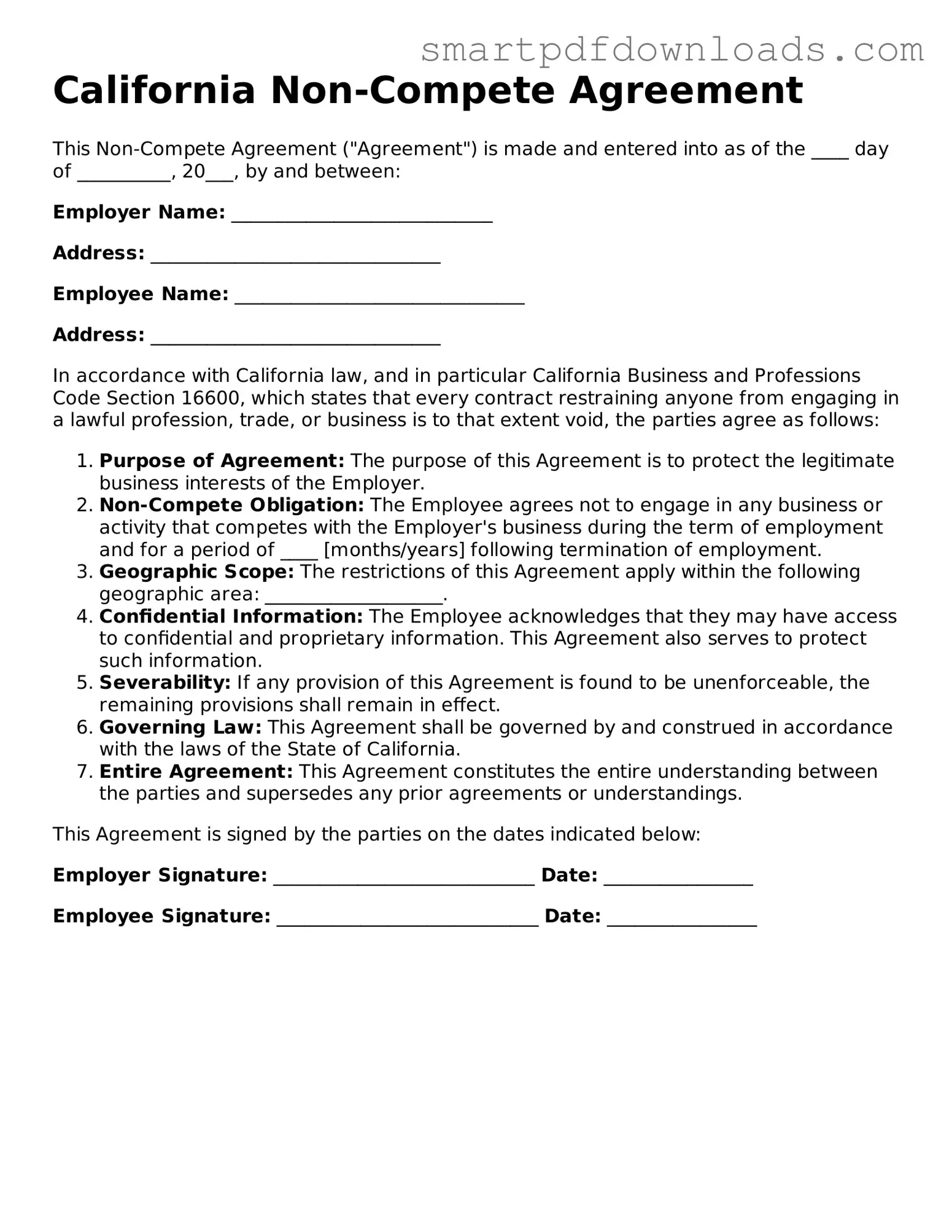California Non-Compete Agreement
This Non-Compete Agreement ("Agreement") is made and entered into as of the ____ day of __________, 20___, by and between:
Employer Name: ____________________________
Address: _______________________________
Employee Name: _______________________________
Address: _______________________________
In accordance with California law, and in particular California Business and Professions Code Section 16600, which states that every contract restraining anyone from engaging in a lawful profession, trade, or business is to that extent void, the parties agree as follows:
- Purpose of Agreement: The purpose of this Agreement is to protect the legitimate business interests of the Employer.
- Non-Compete Obligation: The Employee agrees not to engage in any business or activity that competes with the Employer's business during the term of employment and for a period of ____ [months/years] following termination of employment.
- Geographic Scope: The restrictions of this Agreement apply within the following geographic area: ___________________.
- Confidential Information: The Employee acknowledges that they may have access to confidential and proprietary information. This Agreement also serves to protect such information.
- Severability: If any provision of this Agreement is found to be unenforceable, the remaining provisions shall remain in effect.
- Governing Law: This Agreement shall be governed by and construed in accordance with the laws of the State of California.
- Entire Agreement: This Agreement constitutes the entire understanding between the parties and supersedes any prior agreements or understandings.
This Agreement is signed by the parties on the dates indicated below:
Employer Signature: ____________________________ Date: ________________
Employee Signature: ____________________________ Date: ________________
